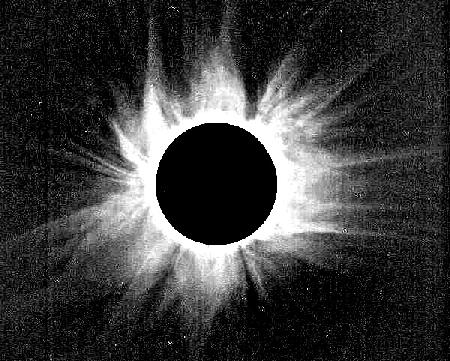
Combining this image with the SOHO LASCO C2 view, we get:
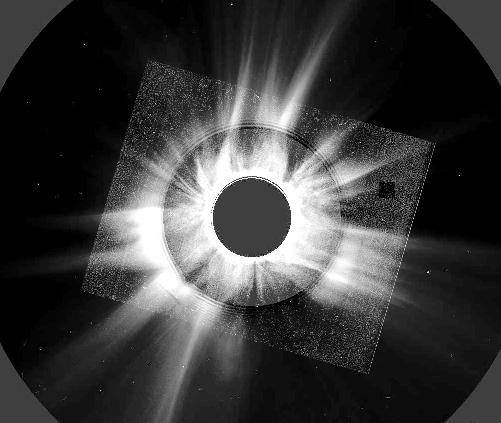
The background for all the following pictures is formed by images from the LASCO coronagraph of the SOHO spacecraft, to be found in the archive. LASCO C3 has the largest field of view (corresponding to 1/10 AU), C2 has higher resolution and is more suitable for the following experiments.
Even a coronagraph in space cannot match the occulting power of the Moon, so the C2 images cut out the nice coronal structure close to the solar surface. This, however, is delivered by pictures taken during the eclipse, esp. those employing a radially graded filter. One nice result was featured by NASA - here is Jonathan Kern's view from Romania in an enhanced (by unsharp masking) version:

Combining this image with the SOHO LASCO C2 view, we get:

Now what about amateur photographs taken with ordinary cameras without radially graded filters? First let's try out the picture with the longest exposure by Susanne Hüttemeister (note: this scan was made from a print and didn't capture the whole density range of the negative), treated by unsharp masking to bring out the coronal rays:
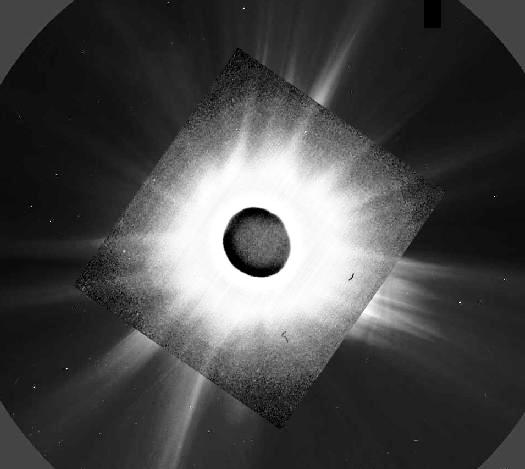
The main rays match up nicely with LASCO's structures (what did you expect?). And now the same experiment with my own best corona, again only scanned from a print from the slide and also treated with unsharp masking:
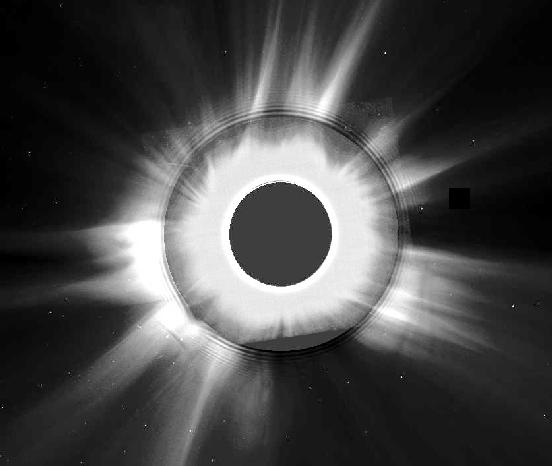
And here is the same view, 'enhanced' by another run of unsharp masking ...
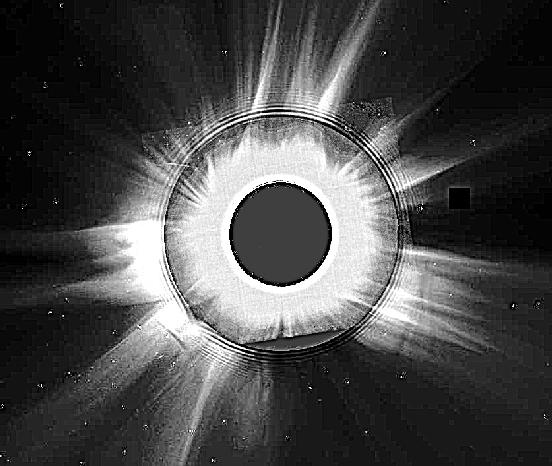
Now lets add to this the picture by Cyril Cavadore & al. taken with a professional CCD camera in France (also enhanced by unsharp masking):
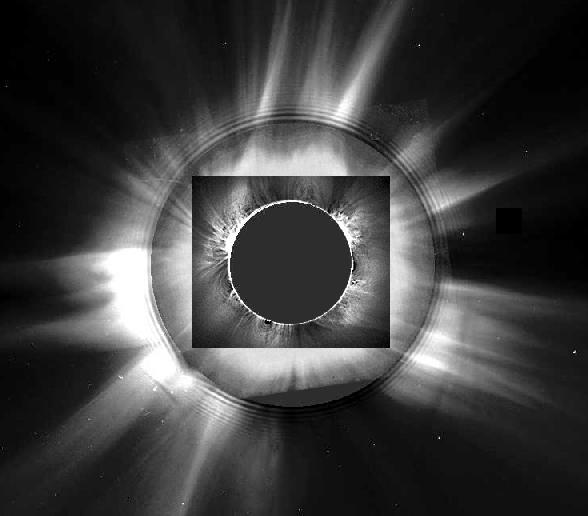
And finally we merge the images of LASCO C3, C2 and Kern's image to the biggest picture of all:
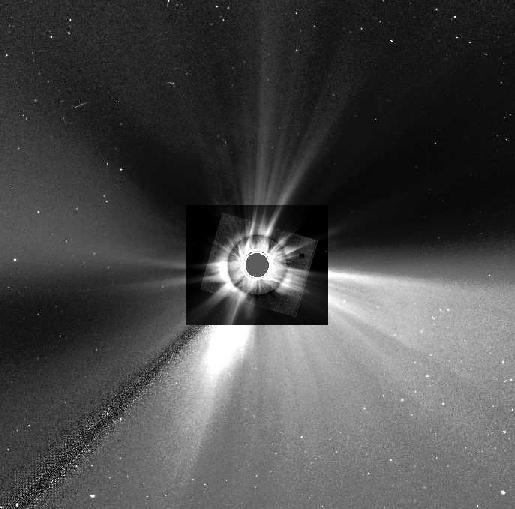
First version posted: Sept. 10, 1999.